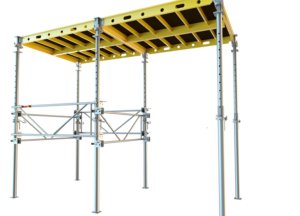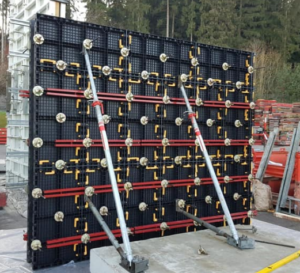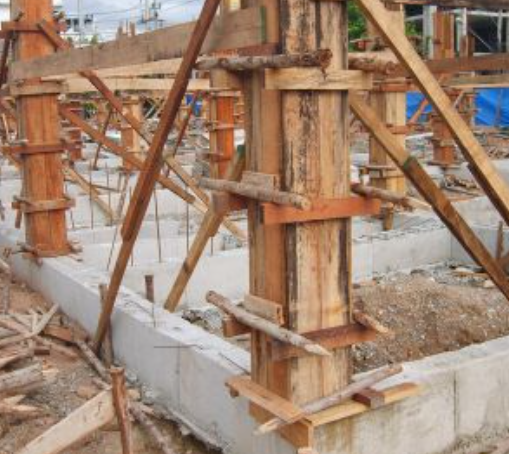Unlocking the Potential of Shuttering in Construction: A Comprehensive Guide
In the realm of construction, the term “shuttering” holds significant importance, serving as a foundational element in the creation of concrete structures. From towering skyscrapers to intricate bridges, shuttering plays a pivotal role in shaping the architectural landscape. In this blog post, we’ll explore the various types of shuttering, its advantages and disadvantages, associated costs, and additional insights to deepen your understanding of this indispensable construction technique.
Understanding Shuttering:
Shuttering, also known as formwork, refers to the temporary molds or frameworks used to hold freshly poured concrete in place until it sets and gains sufficient strength. This process ensures that the concrete takes on the desired shape and structure, ultimately forming the backbone of buildings and infrastructure projects worldwide.
Types of Shuttering:
1. Traditional Timber Formwork: Timber formwork, a traditional method widely used in construction, employs timber boards, planks, or plywood sheets to create temporary molds for pouring concrete. Constructed on-site by carpenters, it offers cost-effectiveness, flexibility, and accessibility, making it ideal for various projects. While susceptible to damage from moisture and wear, timber formwork’s ease of adjustment and natural insulating properties contribute to its continued use in residential, commercial, and infrastructure projects, particularly where budget constraints and simplicity in construction are paramount. However, its reusability is limited compared to alternative systems, and maintenance is crucial to ensure longevity and performance.

2. Steel Formwork: Steel formwork, a durable and versatile alternative to traditional timber formwork, utilise steel panels or frames to create temporary molds for casting concrete. With its high strength-to-weight ratio, steel formwork offers greater durability, reusability, and efficiency, making it well-suited for large-scale and repetitive construction projects. Constructed with precision-engineered components, steel formwork provides smooth and consistent concrete finishes, reducing the need for additional surface treatments. While initially more expensive than timber formwork, its long-term benefits include reduced labour costs, faster construction cycles, and minimal maintenance requirements. Commonly used in high-rise buildings, bridges, and infrastructure projects, steel formwork contributes to accelerated construction timelines and improved project outcomes.

3. Aluminum Formwork: Aluminium formwork, an advanced construction technique, employs lightweight aluminium panels or frames to create temporary molds for pouring concrete. Renowned for its exceptional strength-to-weight ratio and durability, aluminium formwork offers remarkable efficiency and reusability, significantly reducing construction time and labor costs. Its modular design facilitates rapid assembly and disassembly, making it ideal for repetitive building layouts. Additionally, aluminium formwork provides superior surface finishes and dimensional accuracy, minimizing the need for post-casting repairs. Although initially more expensive than traditional formwork systems, its long-term benefits include enhanced productivity, reduced material wastage, and extended service life. Widely utilised in high-rise construction, residential complexes, and infrastructure projects, aluminium formwork revolutionises modern construction practices, delivering superior quality structures with unparalleled speed and efficiency. Lightweight yet sturdy, aluminum formwork systems provide ease of handling and quick assembly, optimising construction efficiency.

4. Plastic Formwork: Featuring modular panels made from high-density polyethylene (HDPE), plastic formwork offers versatility, Eco-friendliness, and ease of maintenance.

Advantages of Shuttering:
1. Precise Construction: Shuttering enables the precise shaping of concrete structures according to architectural specifications, ensuring accuracy and consistency.
2. Efficiency: By facilitating rapid construction and assembly, shuttering helps expedite project timelines, reducing labour costs and enhancing productivity.
3. Versatility: With a variety of materials and configurations available, shuttering caters to diverse construction requirements, from simple foundations to complex geometries.
4. Safety: Properly designed and installed shuttering enhances on-site safety by minimizing the risk of accidents and ensuring structural stability during concrete pouring and curing.
Disadvantages of Shuttering:
1. Initial Investment: The upfront cost of acquiring or renting shuttering materials and equipment can be significant, especially for large-scale projects.
2. Labour Intensity: Constructing and dismantling shuttering requires skilled labour and meticulous planning, adding to overall project expenses.
3. Environmental Impact: Traditional formwork materials such as timber may contribute to deforestation, while steel and aluminum production entails energy consumption and emissions.
4. Maintenance Requirements: Depending on the material used, shuttering may require periodic maintenance and repair to ensure longevity and structural integrity.
Cost Considerations:
The cost of shuttering in construction encompasses various factors, including material expenses, labor costs, rental fees (if applicable), and maintenance expenditures. While initial investments may seem substantial, the efficiency and quality provided by well-designed shuttering systems often yield long-term cost savings and enhanced project outcomes.
With shuttering as your guiding framework, let your construction endeavors flourish and your structures stand as testaments to ingenuity and craftsmanship.

Leave a Reply